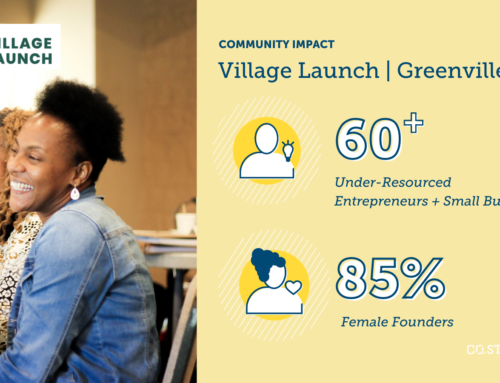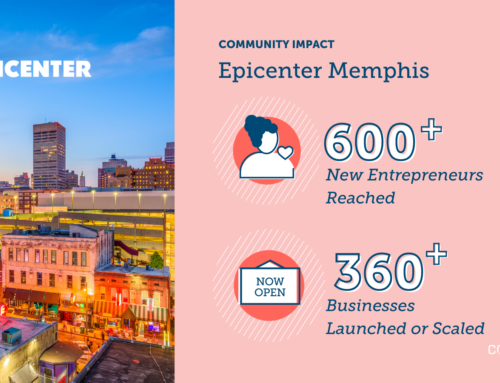Tips For Grant Writing to Fund Your Community Work
by Rebekah Marr, CO.STARTERS Director of Operations & Programs
Finding funding is one of the biggest issues identified by community builders. This article is the second in a series focusing on practical ways for nonprofits to sustain their work.
Some of you probably know me through my role at CO.STARTERS. I’m the person primarily responsible for developing our programs, tools, resources, and the supports to implement them.
What you may not know is this: I spent most of my career prior to CO.STARTERS at a private foundation.
For almost seven years, I learned the ins and outs of grantmaking. I saw firsthand what many of you wonder about: why they request all that information, what they are looking for, and how they decide where to put their money.
After leaving the foundation, I tried my hand at the other side of the business: grant writing. Turns out I was pretty good at it, thanks to all I had learned at the foundation.
During my time on both sides, I saw patterns about what makes a successful grant. Here’s what I learned.
Shop Local
In my experience, a lot of organizations think big national grants are the key. Walmart, Gates, Knight, Kauffman… The big names have the most money to give away, so they are the ones to ask. Seems logical.
But, who cares the most about a community? The people in it.
I find local asks to be much more fruitful than highly competitive national grants. If a funder’s mission focuses on the local community, your community work will help them fulfill their mission. It’s an easy win. While funding opportunities vary from place to place, many have local or regional community foundations. If you don’t know where to start, start with a community foundation.
Although a national grant is possible, the numbers are not in your favor. Take the Kauffman Inclusion Open for example. In 2019, they received over 750 applications; 19 of those were selected—2.5% of applicants. With close to 900 applicants in 2017, the odds were even worse. And the application process is time intensive with multiple rounds of due diligence. I’ve personally experienced the amount of energy that goes into these. Because there are fewer applicants, local grants have a higher chance of success and typically a simpler application process.
Test & Build
Another thing I’ve learned is that the type of ask matters. In my experience, grants that ask for one of two things tend to be more successful.
First, grants should be used for funding pilots or proof of concept. These early tests can help mitigate the risk to a nonprofit, helping them try something new to solve a community problem. If it works, then go on to find others to help sustain the work. If it fails, share your learnings with the funder (trust me, they want to know what really happened—good and bad).
Second, grants should be used for capacity building. Use a grant to create a new revenue stream or to address a root sustainability issue. By creating capacity within the organization, the grant can provide a one-time fix with an ongoing impact.
Typically, the least successful grant requests are those for operating expenses or already established programs. Both need funding, but sources other than grants are probably a better idea.
Build Sustainability into Your Model
Grantors will run from dependent relationships. While they want to see great things happen in the community, don’t expect them to fund the project indefinitely. The stronger your plan is for how you will sustain the project past the grant term, the better your chances. Get creative and build sustainability into your model from the start.
For example:
- Demonstrate that after the first year of piloting a program (with grant funds) you’ll be able to use program fees to cover the majority of expenses.
- If you’re serving underestimated populations, expand your offering more broadly to the wider community with sliding scale fees. Those who can afford it can subsidize those who can’t.
- Use organizational expertise to solve a relevant problem in the business community (and charge for your services).
- Create tangible things through your work that can be sold.
- Or outline a plan for leveraging other sources to help sustain.
In the end, remember, it’s not about the worthiness of your project. It’s about how well your project accomplishes the funder’s mission.
Want to write a grant to launch CO.STARTERS in your community?
Check out this template for ideas.



